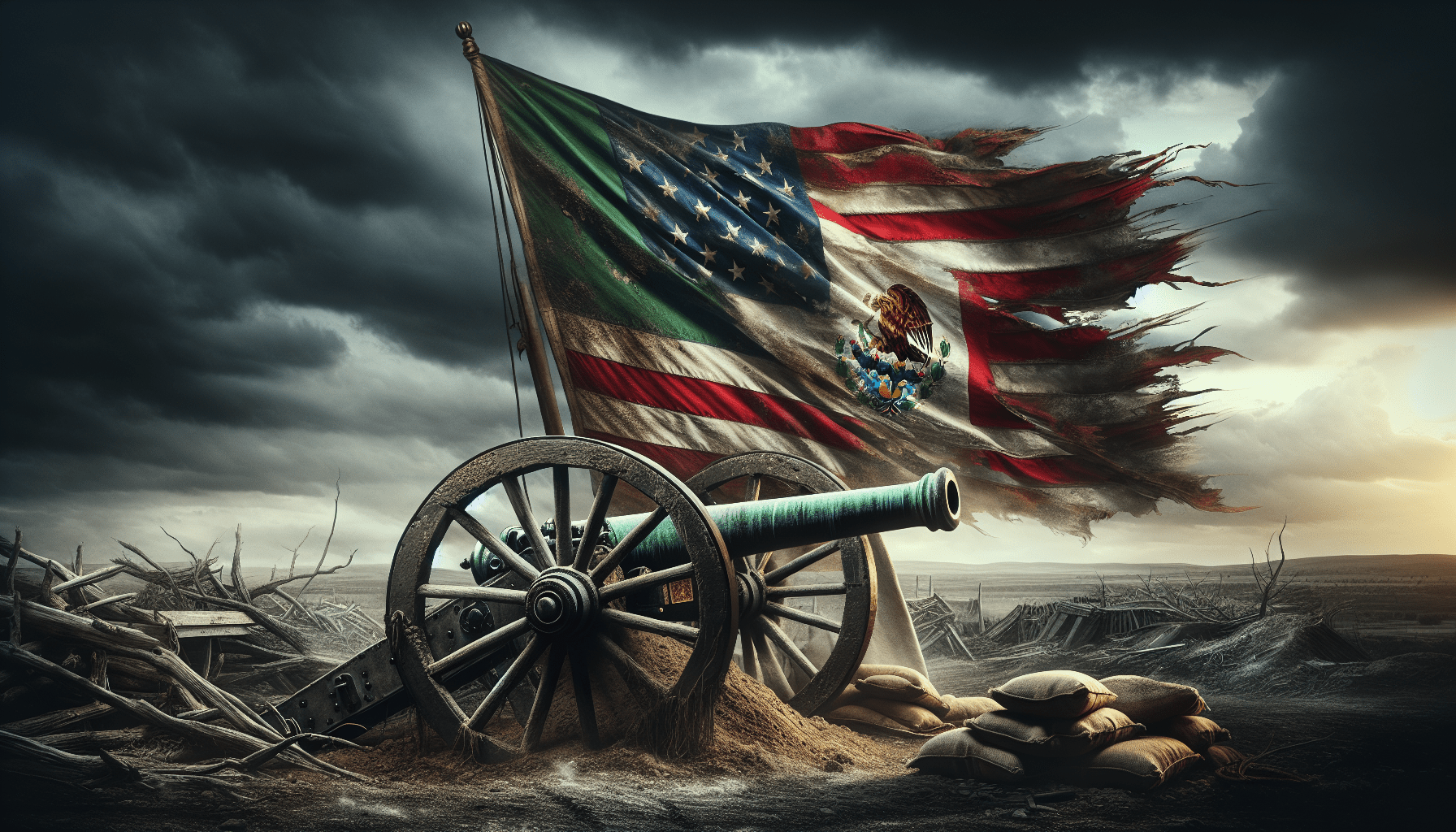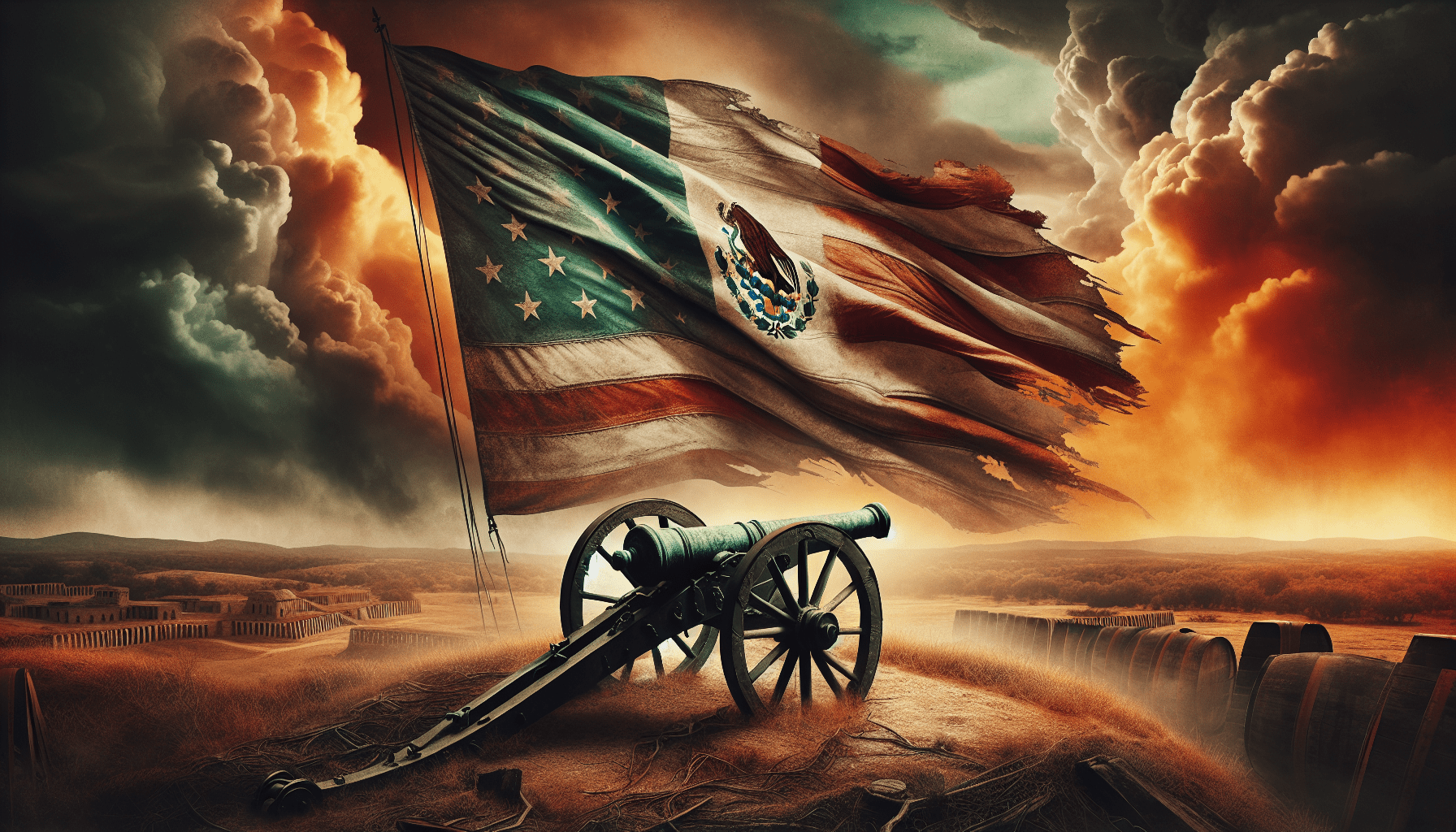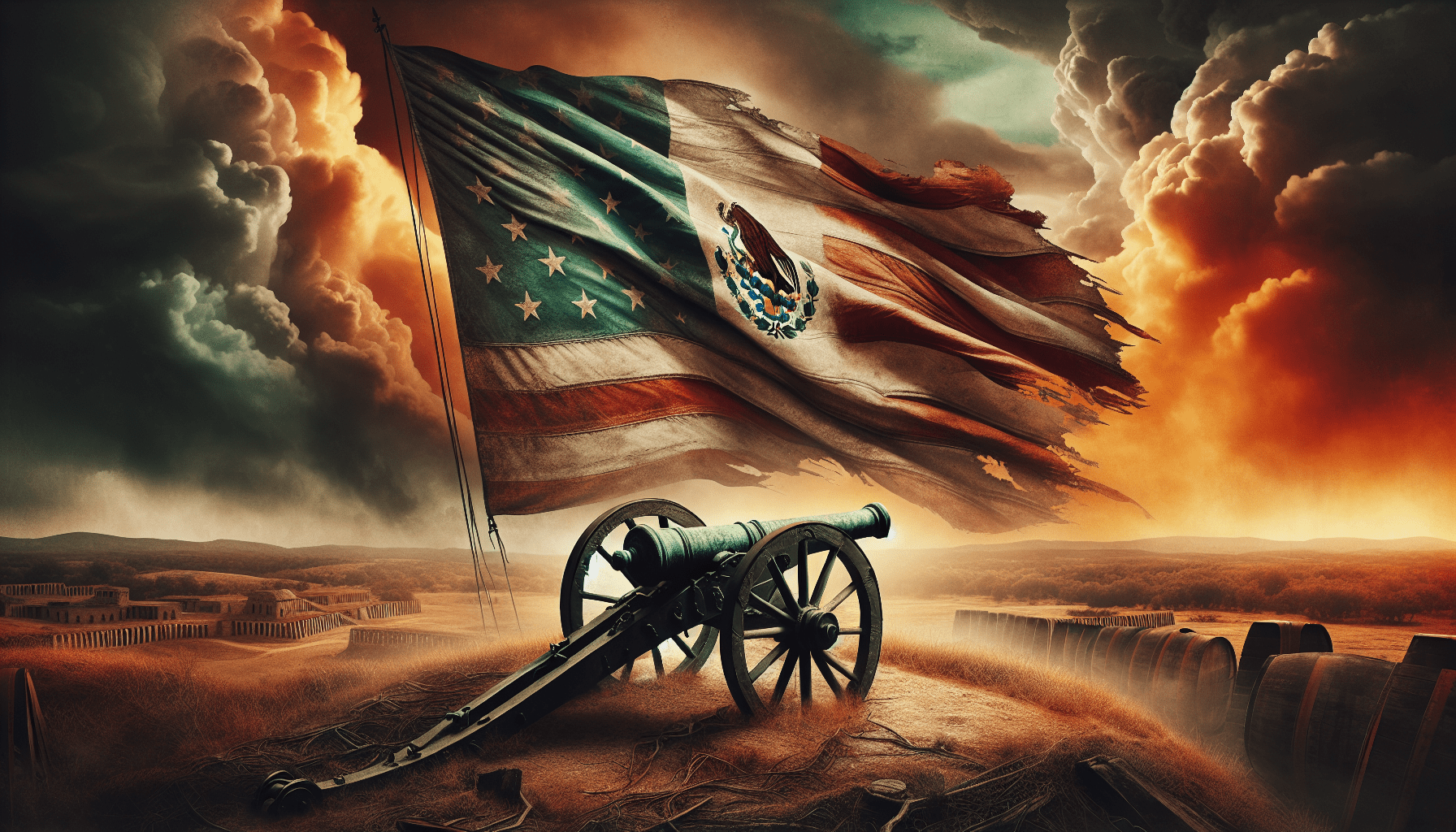The Mexican-American War of 1846-48 stands as a significant episode in the history of North America, highlighting the tensions that arose from territorial expansion and differing political ideologies between two neighboring nations. The conflict was precipitated by a series of provocative events, including the annexation of Texas and escalating disputes over boundary definitions. This documentary explores the complex factors leading to the war, key military engagements, and the resultant Treaty of Guadalupe Hidalgo, which dramatically shifted territorial boundaries and shaped the future trajectory of United States-Mexico relations.
Through an examination of historical context, military strategies, and the social implications of the war, the film provides a nuanced understanding of this pivotal moment in history. It presents not only the battles and strategies employed by both sides but also the broader themes of expansionism and the impact of the conflict on domestic politics, particularly related to the contentious issue of slavery. The documentary serves as an invaluable resource for comprehending how the Mexican-American War laid the groundwork for ongoing challenges in U.S.-Mexico relations and the sociopolitical landscape of the continent.
The Mexican-American War (1846-1848)

Background Context
Early Relationships between the U.S. and Mexico
In the early 19th century, the burgeoning nations of the United States and Mexico were situated alongside one another, sharing a sprawling and undefined border that traced territories rich in promise and conflict. Following Mexico’s independence from Spain in 1821, it stretched from the Oregon territories in the northwest to the Gulf of Mexico in the southeast, a vast expanse marked by great potential for expansion and exploitation. On the other hand, the United States, buoyed by the doctrine of Manifest Destiny, sought to extend its borders further west, often justified by a sense of divine right and national destiny. However, these ambitions were accompanied by underlying tensions. You must recognize that the settlers’ motivations were not merely territorial; they were also shaped by cultural disparities, including differing religious beliefs, as many U.S. settlers were Protestant while Mexico was predominantly Catholic.
Settlement Patterns and Expansionist Ideas
During this period, patterns of settlement in Mexican territories, particularly in Texas, began to materialize. Encouraged by the Mexican government with the hope of cultivating land and establishing order, American settlers—many of whom were motivated by the promise of land and opportunity—began to pour into these regions. Nevertheless, the settlers came with preconceptions and behaviors that often clashed with Mexican societal norms. By declining to fully integrate into Mexican culture—accepting Catholicism and adhering to local laws—the settlers cultivated an environment ripe for discontent. The ideals of expansionism incubated a sense of superiority among these settlers, fortified by the belief that they were destined to propagate their way of life across the continent.
Tensions at the Border in the Early 19th Century
As you explore this historical moment, it becomes evident that tensions escalated at the border due to a confluence of factors. The settlers frequently ignored Mexican laws, particularly those prohibiting slavery, leading to resentment and mistrust among the Mexican populace and governance. In addition, the political situation in Mexico was fraught with instability, marked by the rise of centralists who desired national consolidation and federalists advocating for local autonomy. Consequently, sporadic violence, skirmishes, and disputes began to denote daily life along the border, portending the impending conflict between the two nations.
The Texas Republic
The Role of the Texas Revolution
The situation in Texas reached a boiling point with the emergence of the Texas Revolution. In 1836, Texan settlers, feeling marginalized by the central Mexican government’s authoritarian policies—particularly under President Antonio López de Santa Anna—rose in armed rebellion. The revolution was fueled by a mix of grievances, including lack of representation and cultural imposition, culminating in a desire for independence from Mexico. The conflict was catalyzed by a resolute sense of identity among the Texan settlers, which they perceived as being at odds with the overarching Mexican authority.
Santa Anna’s Capture and Texas Independence
The revolution’s pivotal moment occurred at the Battle of San Jacinto, where Texan forces, under the command of Sam Houston, executed a daring surprise attack that resulted in Santa Anna’s capture. Following this engagement, Santa Anna was compelled to sign treaties recognizing Texas as an independent republic, albeit under duress. This event not only marked a decisive turning point in Texan history but also set the stage for heightened tensions with Mexico, as the legitimacy of the treaties remained contested.
U.S. Annexation of Texas and Mexican Response
The newly established Republic of Texas, despite its fleeting sense of autonomy, remained vulnerable. The ambiguity surrounding Texas’s borders—claimed by Texas to be the Rio Grande but by Mexico to be the Nueces River—kept tensions simmering. In 1845, when the United States formally annexed Texas as its 28th state, Mexico viewed this as an outright provocation. You can observe that the annexation galvanized sentiment within Mexico, leading to dire warnings of war against the encroaching U.S. forces as diplomatic relations soured completely.
Causes of the War
Mexican Laws and American Settlers’ Defiance
The seeds of the Mexican-American War were sown long before the first shots were fired. U.S. settlers, many of whom had relocated to Texas under promises of land ownership, routinely flouted Mexican laws regarding citizenship, governance, and the prohibition of slavery. As you consider these actions, it’s paramount to understand how they fostered resentment and distrust. Such defiance echoed in the political halls of Mexico, where centralist leaders viewed American settlers as illegal immigrants undermining their authority.
Political Tensions in Mexico and Texas
Within Mexico, political factions vied for control, exacerbating the situation. The nation experienced turmoil with centralist leaders like Santa Anna focusing power in Mexico City while federalists demanded autonomy for state governors. This internal strife rendered Mexico ill-prepared to manage the Texan dynamic or respond decisively to external threats. The fragmented politics of Mexico became interwoven with the Texan desire for independence—a brew that would soon boil over into war.
President Polk’s Expansionist Agenda
The trajectory toward war was further aided by the ambitions of President James K. Polk, an ardent advocate for expansionism. Polk’s administration was characterized by a staunch belief in Manifest Destiny—the idea that the United States was destined to expand its territory across the North American continent. This ideology not only justified the incursion into Mexican territory but also fueled public fervor for war, effectively orchestrating the narrative that military action was necessary for national growth and security.
Declaration of War
The Ambush that Ignited Hostilities
The flashpoint for war came with the ambush on American troops at a ranch in the disputed territory along the Rio Grande on April 26, 1846. Mexican forces attacked a reconnaissance party dispatched by General Zachary Taylor. The resulting casualties were profound, as roughly a dozen American soldiers were killed, and others captured. This ambush translated into a rallying cry for war, prompting President Polk to declare that hostilities had been initiated and that the U.S. must respond.
Polk’s Request for War Declaration
In the wake of this conflict, Polk sought Congressional approval to declare war, framing his request as a necessary response to Mexican aggression and violations of American sovereignty. During his address, he emphasized the incidents at the border and cited the unresolved claims for damages stemming from the Mexican War of Independence. His rhetoric struck a chord with a populace already leaning toward expansionist sentiments, setting the stage for a rapid militarization and support for the incoming conflict.
Public Support and Opposition in the U.S.
The declaration of war did not arrive without contention. While many citizens rallied behind Polk’s call, energizing support for swift military action, opposition also simmered among segments of the population. Prominent voices, including those from the Whig Party, raised moral and ethical objections to the war. They argued that the conflict was an imperialist endeavor rather than a genuine defense of American interests. Thus, public opinion was sharply divided, underscoring the complexities of national sentiment during this pivotal moment.

Military Capabilities
Comparison of U.S. and Mexican Military Strength
As hostilities erupted, the military capabilities of the United States and Mexico differed significantly, with the former possessing advantages in both manpower and resources. By the time of the war, the U.S. had grown to a population of over 12 million, while Mexico’s military was hindered by outdated equipment and significant internal strife. The U.S. Army, though small and largely composed of inexperienced soldiers, boasted superior artillery and tactics that enhanced their operational effectiveness.
Challenges Faced by the U.S. Army
Despite these advantages, the U.S. Army confronted considerable challenges as they mobilized for conflict. The troops were often inadequately trained and poorly equipped for the rigors of war, with a significant portion composed of immigrant volunteers. Morale fluctuated, influenced by the realities of military life and the complexities of navigating Mexican terrain. Additionally, logistical inadequacies compounded their struggles, hindering effective supply chains and strategic execution.
Mexican Army’s Struggles with Political Disunity
On the Mexican side, the army’s performance was consistently undermined by political disunity and a lack of coherent strategy. The internal tumult within Mexico, marked by factional disputes and leadership changes, left the military fragmented. Coupled with logistical deficiencies and outdated weaponry, the disarray hampered Mexico’s ability to mount an effective defense against the advancing U.S. forces. In examining the Mexican military’s condition, you must note how these vulnerabilities opened pathways for U.S. victories.
Major Battles
Battle of Palo Alto: Initial Confrontations
The initial engagements set the tone for the war. The Battle of Palo Alto on May 8, 1846, marked the first significant confrontation between U.S. and Mexican forces. Utilizing superior artillery tactics, General Taylor’s forces pushed back the Mexican army, an early display of American military ingenuity. This battle illustrated the effectiveness of U.S. strategies in open terrain and emphasized the growing disparity in combat efficiency between the two nations.
Battle of Monterrey: Key Territorial Gains
As the war progressed, the Battle of Monterrey in September 1846 became a pivotal moment, allowing U.S. forces to capture a key Mexican city. The battle was characterized by intense street fighting, a testament to both sides’ fierce determination. The U.S. victory not only provided a strategic foothold in northern Mexico but also shifted the momentum toward American forces, empowering their efforts in subsequent battles.
Pedregal Battles and Their Significance
Further along the timeline of conflict, the Pedregal battles represented another crucial chapter in the war. These engagements highlighted U.S. tactical sophistication against a backdrop of erratic Mexican responses. The capitalizing on pivotal victories underscored the tactical advantages enjoyed by the Americans, showcasing their ability to exploit Mexican weaknesses while solidifying their territorial influence.

Campaigns in California and New Mexico
U.S. Strategies and Tactics in the West
The campaigns in California and New Mexico were characterized by rapid U.S. military movements, which sought to seize control of critical territories. These campaigns were carefully orchestrated and utilized strategies such as swift cavalry maneuvers and aggressive offensives to outmaneuver Mexican forces. You would note how the American military prowess leveraged local support, capitalizing on discontent among the Mexican populace that desired stability over continued turmoil.
Key Figures and Military Leadership
The leadership within these campaigns is worthy of examination, especially figures like General Stephen W. Kearny, who led forces into New Mexico, and Commodore John D. Sloat, who played a pivotal role in securing California. Their strategies, often marked by decisive leadership and willingness to engage hostile forces, created an impact that resonated throughout the respective territories. You should consider how these figures influenced the momentum of the war and embodied the spirit of American expansionism.
Impact of the Campaigns on Mexican Resistance
Despite the setbacks faced by Mexican forces, resistance remained a powerful undertone throughout these campaigns. Local militias and national forces, while challenged, did not yield without resistance. The Mexican government, aware of the territorial threat posed by American expansionism, mobilized additional troops and resorted to guerrilla tactics in informative efforts to slow down the U.S. advance. The impact of these campaigns would reverberate through the social fabric of Mexican society, amplifying grievances that would linger long after the war’s conclusion.
Final Stages of the War
The Push to Capture Mexico City
As the war progressed toward its conclusion, the capture of Mexico City became an unequivocal objective for the U.S. military. The campaign received heightened urgency, with General Winfield Scott leading a well-planned assault that utilized strategic land and naval engagements to facilitate the push toward the capital. Through careful orchestration of battle plans, Scott’s forces moved effectively to breach the defenses, foreshadowing the impending fallout for the Mexican government.
Decisive Battles Leading to Conclusion
Decisive battles, such as those at Contreras and Churubusco, culminated in significant American losses for the Mexican garrisons but showcased the degree to which U.S. forces had become emboldened and better organized. Ultimately, the capturing of Mexico City in September 1847 served as a decisive blow, effectively crippling the Mexican military’s ability to continue its organized resistance. The U.S. presence in the capital heralded an unwillingness to negotiate from the Mexican government, paving the way toward eventual resolution.
Role of Logistics and Communication in the Final Campaigns
Throughout these final campaigns, the role of logistics and communication proved critical to U.S. operations. The coordination of supply lines, troop movements, and intelligence ensured a decisive edge over a fragmented Mexican force. As you contemplate the American success, you should note that these logistical accomplishments not only defined the efficiency of the military strategy but also highlighted systemic failures within Mexican command structures.
Treaty of Guadalupe Hidalgo
Terms of the Treaty and Territorial Changes
The conclusion of the Mexican-American War found its resolution in the Treaty of Guadalupe Hidalgo, signed on February 2, 1848. The treaty marked a significant territorial reconfiguration, wherein the United States gained vast tracts of land, including present-day California, Arizona, New Mexico, and parts of Colorado, Utah, and Nevada. The implications of this territorial shift fundamentally altered the landscape of North America and served as a cornerstone in the expansionist narrative that characterized the United States in the 19th century.
Compensation to Mexico and Implications
In addition to territorial concessions, the treaty stipulated that the United States would pay Mexico $15 million in compensation. While this payment mitigated some tensions, it did little to absolve the profound loss felt within Mexico, which viewed the transaction as deeply humiliating. You should consider how this arrangement not only deepened divisions but also sowed the seeds for future grievances between the two nations, embedding a lingering discord.
Reactions from Both Countries
The aftermath of the treaty brought mixed reactions from both sides. In the United States, many celebrated the acquisition of new territories that promised growth and resources, affirming the prevailing belief in Manifest Destiny. Conversely, in Mexico, the treaty underscored a narrative of loss and betrayal, exacerbating feelings of resentment and fostering a historical view of the conflict as a tragic episode driven by American imperialism. The differing sentiments set the stage for strained relations long after the treaty’s signing.
Conclusion
Reflections on the Documentary’s Insights
In reflecting upon the documentary “The Mexican-American War 1846-48,” it becomes clear that this war, marked by ambition and conflict, laid the foundations for a new reality on the continent. You can note that the themes of expansionism, cultural imposition, and the consequences of imperial politics remain relevant, resonating through history and shaping contemporary U.S.-Mexico relations.
Understanding the War’s Significance Today
The legacy of the Mexican-American War continues to drive discourse around territorial rights, cultural identity, and national sovereignty. The ongoing complexities in U.S.-Mexico relations remind you of the intricate interplay between political decisions and historical consequences. This wartime narrative suggests that unresolved grievances from the past continue to influence current dynamics in transnational interactions.
Lessons Learned from the Mexican-American War
As you delve into the lessons afforded by the Mexican-American War, consider the cautionary tales surrounding imperial ambition and the realities of cultural assimilation in conflict. Embracing the historical context enables you to grasp the intricacies of national identity and the enduring impact of historical narratives. Ultimately, the war provides profound insights into the human experience—emphasizing the importance of understanding diverse perspectives in navigating the complexities of international relations today.
